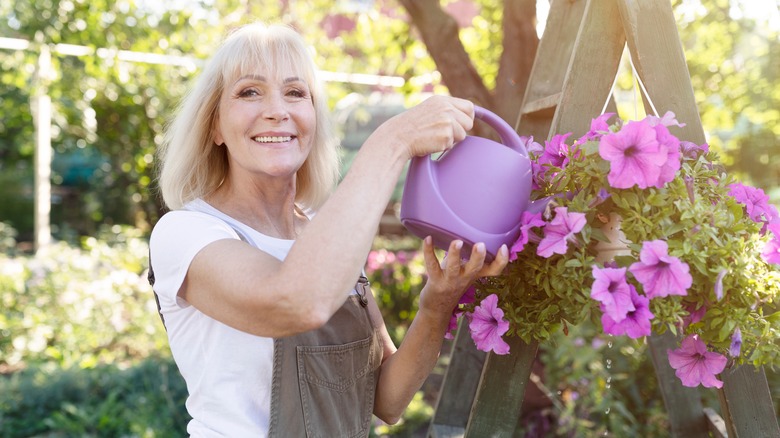How To Revive Petunias With Browning Leaves
Petunias (Solanaceae petunias) are gorgeous flowers that bloom in various beautiful colors such as pink, purple, white, and red. They are considered annuals but can also be perennials in growing zones 9 to 11. When grown as perennials, petunias are prone to more damage because of the climate. Further, they thrive in low-humidity areas, so if you live in a high-humidity climate, their leaves may start turning brown. If you notice that your petunias leaves are turning color, you can easily revive them with a new watering schedule. You may also need to repot and prune the plant as well.
High humidity and overwatering are the leading causes of browning leaves. When you water petunias in a humid climate, they can't release the water through transpiration. This means that it stays in their cells, causing the droplets to burst in the leaves. The water will also sit in the soil and lead to root rot. However, if you don't live in a high-humidity area but the leaves have brown patches, then overwatering may have damaged the roots or the plant could have a fungal infection from sitting in the same water for too long. Nevertheless, if your petunias are going through a rough patch, they can be revived with a few simple changes.
Create a new watering schedule
Petunias grow in warmer seasons or from spring to fall, which means they need to be watered regularly. While they enjoy the sun, these flowers don't like the extreme summer heat, so their soil should be moist but not soggy to keep them hydrated. If your plant's leaves are turning brown due to too much water, you'll want to fix their watering schedule. Don't water your petunias for a few days to a week until their soil is dry. Then, you can start watering your petunia's soil once a week. Typically, the same day every week is ideal. You want at least 2 inches of the soil's surface to dry before you water it again, so always check the surface before you start watering.
If you're growing your petunias outdoors in pots and the soil is still wet the following week, look at the potting mix you used. You might need to amend the soil and add a new potting mix with perlite or clay pebbles to allow the water to drain correctly. Also, check the drainage holes to ensure there isn't anything clogging them. You'll be able to water your petunias better with an upgraded system. Over time, their leaves should start growing without any brown patches.
Prune and repot your petunias
When adjusting your petunias to a new watering schedule, it's vital to check the roots and ensure there isn't any damage. Overwatering can lead to root damage and fungal infections, causing the leaves to turn brown. However, if it looks like the water is adequately draining in the soil but the leaves are still patchy, there could be more profound issues. An easy way to tell if the roots are damaged is if the plant's base also has brown spots. You'll want to remove the plant from the pot and prune the damaged roots. Then, repot the plant in a new container that's spacious enough to allow the roots to spread and grow as long as they need. Planting the petunia in a smaller pot won't allow the roots to spread out, causing them to bundle and become stressed.
On the other hand, if the roots look healthy but the leaves are still wilting and browning, the petunia might be suffering from a fungal infection. They'll usually have mold growing on the stems or near the base. Instead of letting your plant completely die, pruning the brown leaves will help encourage new growth. Always use sanitized gardening shears to cut the stems to prevent bacteria from spreading to the cuts, and prune 1 inch away from the mold. Once you're done pruning, throw away all of the clippings to prevent them from sitting on the soil, as this could cause root rot.


